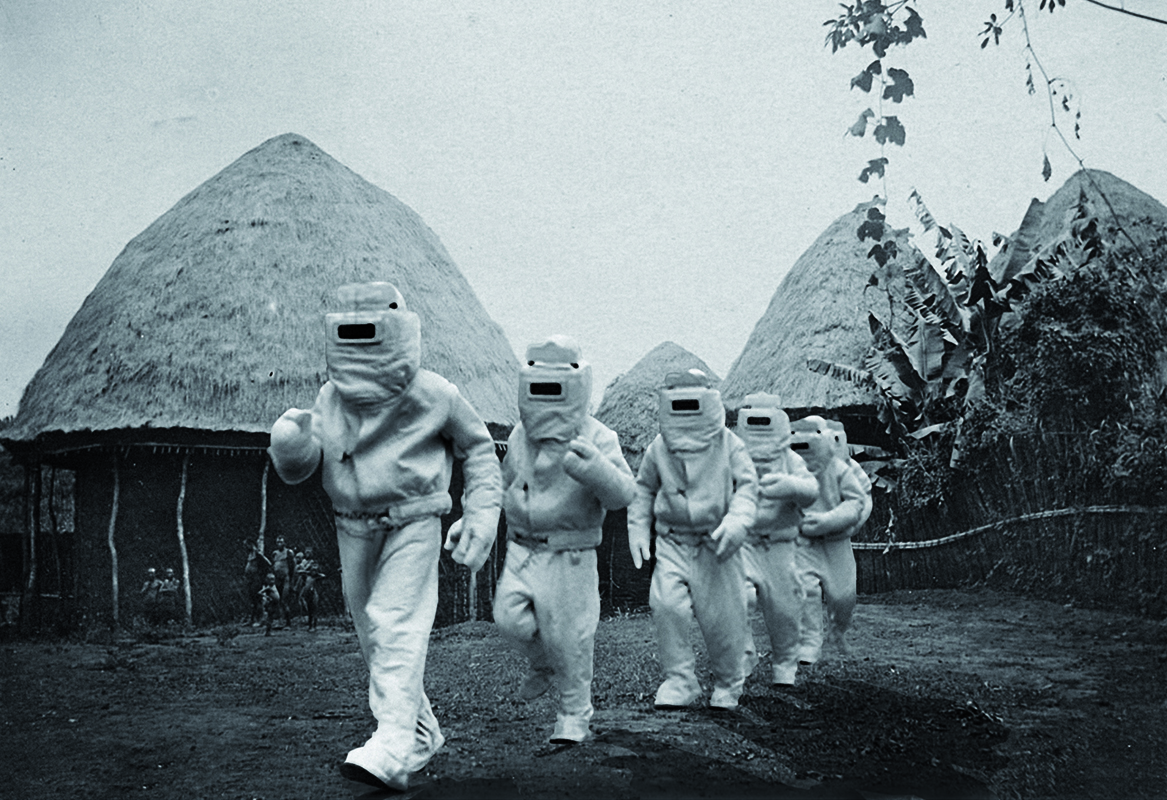Sven Spieker: The Big Archive: Art from Bureaucracy (2008)
Filed under book | Tags: · archive, archiving, art, art history, bureaucracy, database, memory, museum, photography, surrealism

“The typewriter, the card index, and the filing cabinet: these are technologies and modalities of the archive. To the bureaucrat, archives contain little more than garbage, paperwork no longer needed; to the historian, on the other hand, the archive’s content stands as a quasi-objective correlative of the “living” past. Twentieth-century art made use of the archive in a variety of ways—from what Spieker calls Marcel Duchamp’s “anemic archive” of readymades and El Lissitzky’s Demonstration Rooms to the compilations of photographs made by such postwar artists as Susan Hiller and Gerhard Richter. In The Big Archive, Sven Spieker investigates the archive—as both bureaucratic institution and index of evolving attitudes toward contingent time in science and art—and finds it to be a crucible of twentieth-century modernism.
Dadaists, constructivists, and Surrealists favored discontinuous, nonlinear archives that resisted hermeneutic reading and ordered presentation. Spieker argues that the use of archives by such contemporary artists as Hiller, Richter, Hans-Peter Feldmann, Walid Raad, and Boris Mikhailov responds to and continues this attack on the nineteenth-century archive and its objectification of the historical process.
Spieker considers archivally driven art in relation to changing media technologies—the typewriter, the telephone, the telegraph, film. And he connects the archive to a particularly modern visuality, showing that the avant-garde used the archive as something of a laboratory for experimental inquiries into the nature of vision and its relation to time. The Big Archive offers us the first critical monograph on an overarching motif in twentieth-century art.”
Publisher MIT Press, 2008
Art: Cultural Studies series
ISBN 0262195704, 9780262195706
219 pages
Reviews: Sas Mays (caa.reviews 2009), Andrew J. Lau (InterActions 2009).
PDF, PDF (updated on 2017-4-22)
Comments (2)Cristina De Middel: Afronauts (2012)
Filed under artist publishing | Tags: · africa, documentary, photography, space race, zambia

“In 1964, still living the dream of their recently gained independence, Zambia started a space program that would put the first African on the moon catching up the USA and the Soviet Union in the space race.
Only a few optimists supported the project by Edward Makuka, the school teacher in charge of presenting the ambitious program and getting its necessary funding. But the financial aid never came, as the United Nations declined their support, and one of the astronauts, a 16 year old girl, got pregnant and had to quit.
That is how the heroic initiative turned into an exotic episode of the African history, surrounded by wars, violence, droughts and hunger.”
Published on the occasion of the exhibition The Afronauts organized by Sala Kursala and curated by Jesús Micó at Sala Kursala, University of Cádiz, Spain.
Editor Laia Abril
Design Ramón Pez
ISBN 9788461585960
98 pages
via uca.es
Video (4:30)
Exhibition
Review
Walter Benjamin: The Arcades Project (1982/1999) [German, English]
Filed under book | Tags: · 1800s, advertising, bourgeoisie, city, commodification, critical theory, cultural criticism, fashion, flaneur, history, literary criticism, literature, paris, photography, poetry

“To great writers,” Walter Benjamin once wrote, “finished works weigh lighter than those fragments on which they labor their entire lives.” Conceived in Paris in 1927 and still in progress when Benjamin fled the Occupation in 1940, The Arcades Project is a monumental ruin, meticulously constructed over the course of thirteen years—“the theater,” as Benjamin called it, “of all my struggles and all my ideas.”
Focusing on the arcades of nineteenth-century Paris—glass-roofed rows of shops that were early centers of consumerism—Benjamin presents a montage of quotations from, and reflections on, hundreds of published sources, arranging them in 36 categories with descriptive rubrics such as “Fashion,” “Boredom,” “Dream City,” “Photography,” “Catacombs,” “Advertising,” “Prostitution,” “Baudelaire,” and “Theory of Progress.” His central preoccupation is what he calls the commodification of things—a process in which he locates the decisive shift to the modern age.
The Arcades Project is Benjamin’s effort to represent and to critique the bourgeois experience of nineteenth-century history, and, in so doing, to liberate the suppressed “true history” that underlay the ideological mask. In the bustling, cluttered arcades, street and interior merge and historical time is broken up into kaleidoscopic distractions and displays of ephemera. Here, at a distance from what is normally meant by “progress,” Benjamin finds the lost time(s) embedded in the spaces of things.
German edition: Gesammelte Schriften, Bd 5: Das Passagen-Werk
Edited by Rolf Tiedemann
Publisher Suhrkamp Verlag, Frankfurt am Main, 1982
ISBN 3518285351
1354 pages
English edition
Translated by Howard Eiland and Kevin McLaughlin
Publisher The Belknap Press of Harvard University Press, Cambridge/MA and London, 1999
ISBN 067404326X, 9780674043268
1073 pages
Das Passagen Werk (German)
The Arcades Project (English)
See also Susan Buck-Morss’ The Dialectics of Seeing: Walter Benjamin and the Arcades Project (1989), and Benjamin at Monoskop (incl. source bibliography).
Comment (1)
